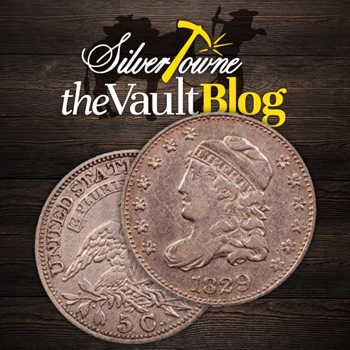
Modifications. Coin designs receive them all the time. Sometimes it is before the coin is released and other times it is after. This is what makes variety possible at times. Perhaps of all the Chief Engravers to ever hold the title at the United States Mint, William Kneass is known for making modifications rather than actually ever designing or engraving any major United States coins during his tenure at the Mint. That does not seem possible, does it?
William Kneass Early Years
Born in Lancaster, Pennsylvania, on September 25, 1781, Kneass would eventually become a member of the service as a volunteer associate among field engineers in the War of 1812. While assisting during the war, he was actually very experienced in engraving outside of the war.
His experience led him to open up his own engraving shop in Philadelphia in 1815 as early on in his career he worked as an engraver making plates for bookwork which made him well-known across the engraving community. He also worked at other engraving firms before opening his own, including ones that featured his name such as Young & Kneass & Co. as well as Kneass & Dellaker. A lot of his work was realized in the form of line engraving as well as aquatints, which is an intaglio printmaking technique that involves etching focused on areas of tone rather than lines. Most aquatints resemble watercolor while being produced from a copper plate etched with nitric acid.
Second Chief Engraver of the United States Mint
The first Chief Engraver of the United States Mint, Robert Scot, passed away while in office in late 1823 which landed William Kneass the title as the second Chief Engraver. While Kneass was named the official replacement on January 29, 1824, Christian Gobrecht was almost handed the title as his achievements and talent made him just as qualified for the job. So why Kneass instead? It was believed that back then Kneass was close friends with the Chief Coiner of the U.S. Mint at the time, Adam Eckfeldts. He was said to have made a pretty strong recommendation for William Kneass. Christian Gobrecht would eventually go on to be the third Chief Engraver of the United States after Kneass.
While at the top during his tenure at the Mint, it would turn out that Kneass did not design or engrave any major coin designs. His contributions to numismatics were mainly secondary, meaning he would be known to make changes to already existing coin designs. For example, he would be responsible for modifying the capped bust of the liberty designs that were originally done by John Reich. This would help create the design of the Capped Bust Half Dime.
On top of modifications, Kneass was responsible for overseeing the production of many United States gold coins in addition to more common circulating coins. He was also credited with creating a restraining collar that would help prevent coins from spreading while maintaining their thickness and weight while simultaneously reducing their diameter. Aside from the Capped Bust Half Dime, Kneass had a hand in the changes made to major gold coins in 1834 that included the $2.5 Gold Classic Head Liberty Quarter Eagle and the $5 Gold Classic Head Liberty Half Eagle.
Health Issues As Chief Engraver
After producing a number of minor modifications during his time at the Mint, Kneass was sidelined as he suffered a stroke in August of 1835. The stroke caused him to be paralyzed on his right side while many stayed in the dark about exactly how ill he was during this time. The Director of the Mint at the time, Robert Patterson, assigned Gobrecht to be his assistant and second engraver as he took on most of the designing and engraving work from 1835-1840.
During his time at the Mint as Chief Engraver before his stroke, Kneass also oversaw the establishment of two United States Mint branches, including the Charlotte Coin Mint and the New Orleans Coin Mint. During the years that his stroke affected his ability to properly function in all facets of the job, the Dahlonega Coin Mint was also established but Gobrecht was said to have mainly overseen this event as it took place in 1837.
William Kneass would eventually pass away on August 27, 1840, leaving Gobrect to take over the title as the Third Chief Engraver of the United States. Due to Kneass’s illness being under wraps, many credits went to him as the designer of a number of pattern coins. Although this was the case, many respected him for his professional manner and the ability to engage others in the world of numismatics.
Sources: USA Coin Book







